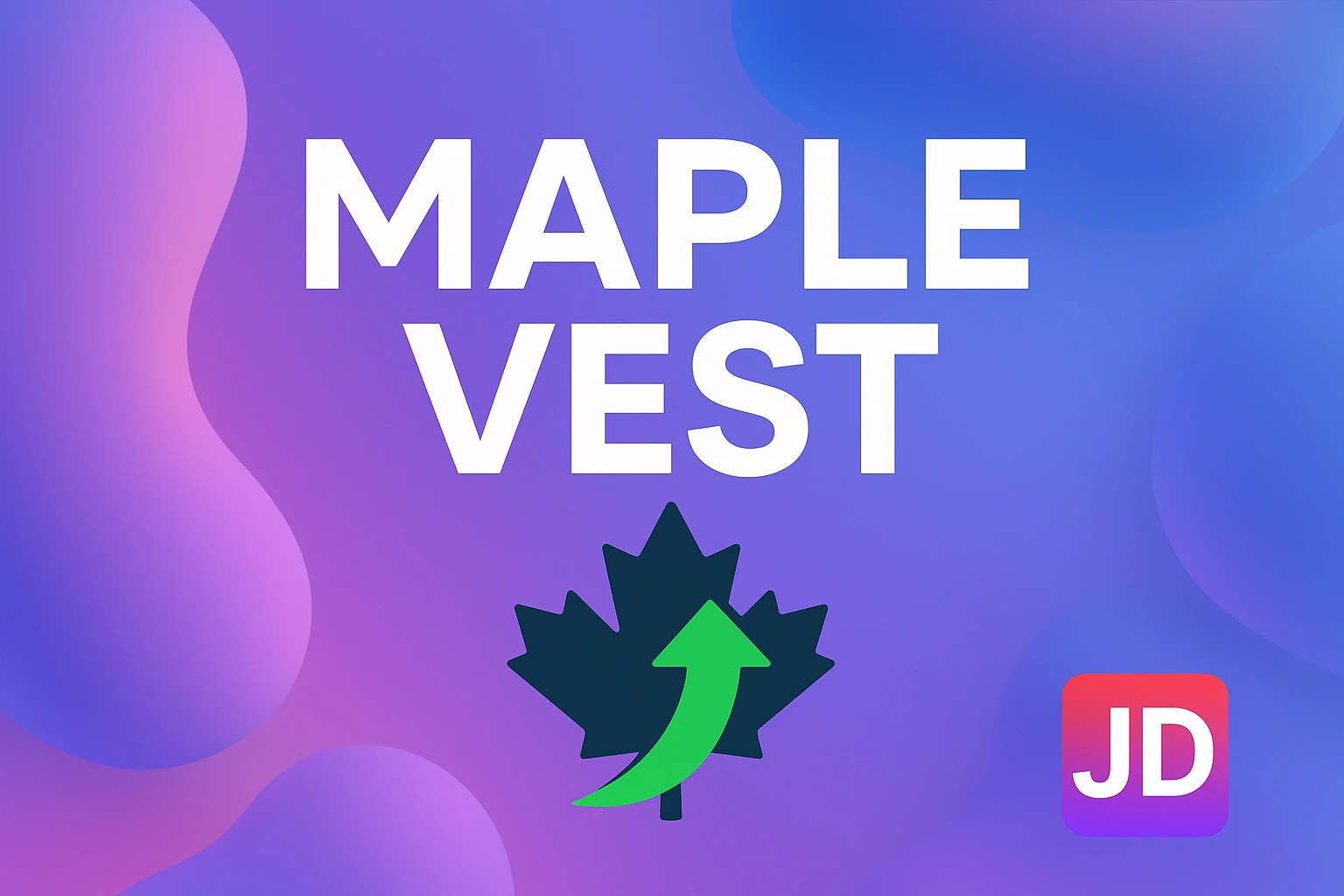


✅ Transparent, Sector-Driven Strategies
✅ Long-Term Portfolio Stability
Investing options:
4.6

Products, markets, & assets:
4.3

Deposits & withdrawals:
4.7

Fees & costs:
4.4

Platforms & usability:
4.4

Safety & reliability:
4.8

Research & analysis tools:
4.4

Education & learning resources:
4.2

| Best For | Traders and long-term investors who want sector-based exposure to Canada’s real economy — energy, mining, and infrastructure — without daily micromanagement. Ideal for active traders looking to balance high-volatility strategies with a calmer, long-term investment pillar. |
|---|---|
| Key Strengths |
Access to vetted Canadian energy, mining & infrastructure projects
Very transparent project documentation and risk indicators
Professional onboarding call with clear, human guidance
Sector-driven strategies aimed at long-term portfolio stability
Low minimum deposit (360 CAD) and clean, intuitive dashboard
|
| Notable Weaknesses |
No dedicated mobile app yet (web platform only)
Focuses solely on Canadian sectors (limited geographic diversification)
Not suitable for short-term or high-frequency trading
Returns are steady, not explosive — best for patient capital
|
| Bottom Line | MapleVest earns a 4.8/5 for providing a legitimate, transparent way to invest in Canada’s core growth sectors. It’s a strong fit for traders and investors who want to balance faster, speculative strategies with slower, sector-based stability backed by real energy, mining, and infrastructure projects. |

I spend most of my time trading markets that move fast – currencies, metals, occasionally equity indices when volatility wakes up. So stepping into a platform like MapleVest felt like walking into a quieter room after a long day of charts screaming at me. It’s a different kind of investing. More grounded. More slow-burning. And as someone whose income depends on timing, spreads, and reaction speed, it was honestly refreshing to explore something that doesn’t revolve around staring at 1-minute candles.
This review is the full breakdown of my experience with MapleVest: what it does, who it’s for, and how it performed for me as a trader looking for stability outside my usual high-velocity environment.
MapleVest is a Canadian investment platform focused exclusively on the country’s big, foundational sectors – energy, mining, and infrastructure. The platform gives investors access to vetted projects in these industries, complete with risk indicators, sector explanations, and transparent fund allocation. There’s no forex-style hype, no crypto noise, no “get rich in 30 days” nonsense. Just long-term, sector-driven investing backed by actual Canadian economic demand.
It’s built around simplicity:
For traders who spend all day reacting, this feels weirdly steady – in a good way.
From a trader’s viewpoint, MapleVest works best for people who:
If you’re a “check-the-chart-every-ten-seconds” type, MapleVest won’t replace your trading routine. But it can balance your portfolio so your entire financial life doesn’t depend on market momentum.
MapleVest zeroes in on growth-heavy industries:
Everything is tied to actual physical output and long-term national demand. Nothing feels abstract or synthetic.
Every opportunity includes:
For someone used to broker platforms hiding half their costs behind tooltips, MapleVest’s transparency feels almost suspicious at first – until you get used to it.
Their team analyzes each project using sector trends and risk-adjusted data. It’s digestible, not overly technical. The insights read like someone who knows Canadian energy and mining actually sat down and wrote the summaries.
You sign up, and MapleVest calls you to walk through the first steps. They answer questions, clarify risk, and help you settle on a strategy – without turning it into a sales pitch.
This is low enough not to feel intimidating, especially if you want to test the waters first.
Trading can be tiring. I love it, but let’s be honest – constant charts, alerts, liquidity spikes, and news releases can burn holes in your brain if you don’t manage your exposure. I started looking for something slower. Something that doesn’t demand reaction every five minutes.
That’s why I tried MapleVest.
Signing up took under a minute. The onboarding call came the next day. The manager sounded like someone who actually understands Canadian sectors, not a script reader. We talked about:
It didn’t feel like a push – just clarity.
As a metals trader, mining naturally caught my attention. The platform has projects tied to gold, lithium, and critical minerals. The lithium demand projections were interesting enough for me to take a position there. Their risk sheet was straightforward – nothing sugar-coated.
I started with 360 CAD (their minimum) and added more a week later. The dashboard tracks sector performance, timelines, and updates without overwhelming you with noise. No flashing numbers. No “urgent alerts.” Just calm data.
A real example: The mining project I chose
One of the projects I invested in was a mid-stage critical minerals operation. The sheet included:
Two weeks after investing, I received an update email saying there was a minor project timeline adjustment due to weather conditions – extremely normal for mining. What impressed me wasn’t the delay; it was the transparency.
Most trading platforms don’t tell you anything unless something is wrong. MapleVest proactively updated investors, which actually strengthened my trust.
Energy is stable, long-term, and tied to national programs. MapleVest’s energy projects usually appeal to investors looking for consistency, not speed.
Trader take:
Energy is the “high-timeframe chart” of investing – slow, steady, predictable.
Mining is where the action is – not fast action, but sector growth action. Critical minerals and lithium have a strong global demand narrative.
Trader take:
Mining fits traders who understand commodities and long-term cycles.
The most boring sector – in a good way. Infrastructure is where you park money when you want predictability.
Trader take:
Infrastructure is like buying into the monthly chart: slow but reliable.
| Pros |
|
|---|---|
| Cons |
|
From a trader’s perspective, the biggest question is always safety.
Here’s what MapleVest does right:
Everything points to a legitimate, grounded investment company – not a speculative trading product.
MapleVest shows 27% projected returns on their materials. This is ambitious but realistic for long-term sector-backed projects in mining and energy. It doesn’t scream “too good to be true,” which is exactly what you want.
Returns come slowly. If you’re used to scalping, this will feel like meditation.
Great for
Not ideal for
MapleVest earns a 4.8/100 for me. As a trader, I appreciate transparency more than anything, and MapleVest delivers that consistently. The slow-paced nature of real-sector investing balances out the rapid-fire chaos of trading, and the platform itself is clean, grounded, and genuinely useful for long-term diversification.
What pushes it slightly short of perfect is the lack of a mobile app and the limited sector scope – though the narrow focus is part of what makes MapleVest trustworthy.
Would I recommend it?
Yes – especially if you trade actively and want at least one part of your portfolio to stop stressing you out.
Long-term, real-sector exposure feels like the missing half of many traders’ strategies, and MapleVest fills that gap cleanly.
All content on JD Forex Broker is carefully verified by our editorial team to meet strict accuracy and transparency standards. The information presented here is backed by the following trusted sources.
JD Forex Broker offers independent reviews and educational content only. We do not provide financial advice. Trading and investing in forex, stocks, crypto, or commodities carries risk, and you should never invest more than you can afford to lose.
Adam Fent is a forex trader who has been involved in the markets since he was a teenager. He started out by day trading penny stocks, and eventually transitioned to Forex because of its liquidity and 24-hour nature.
He has been consistently profitable for the past several years, and is always looking to improve his trading skills. When he's not trading, he enjoys spending time with his wife and two young children.